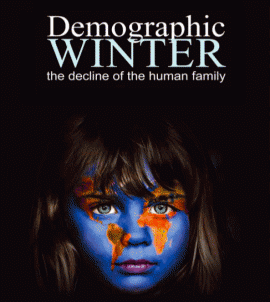By GIULIO MEOTTI
Rome
In 1968 a group of scientists, industrialists and Nobel laureates created the famous “Club of Rome” to denounce the perils of the so-called demographic bomb. These secular prophets were right in predicting that we are facing one of the fastest demographic revolutions in history. But their alarmist concerns about overpopulation were wholly misplaced. Thirty years later, the greatest threat that Italians face is one of demographic self-immolation.
If demography is destiny, Italy is dying. Literally. The number of births has been outpaced by the number of deaths every year since 1994. This Catholic country that has always been stereotyped as the land of big, close-knit families, has attained one of the world’s lowest levels of fertility. In the 1960s, the overall fertility rate was two children per couple. We are now at what demographers call “lowest-low” fertility: 1.3 births per woman. James Vaupel, director of the Max Planck Institute for Demographic Research in Germany, estimates that if the current trend continues, Italy’s population could drop to 10 million by the end of this century, one-sixth of today’s population.
The birth dearth threatens to have catastrophic social and economic consequences. Already now, 22% of Italy’s population is on a pension, one of the highest rates in the world, and the country devotes 15% of its gross domestic product to pensions—more than any other European nation. Demographic meltdown and the unsustainability of the welfare state are closely related.
Italy is not alone in committing demographic suicide. There is not a single country in Europe where people are having enough children to replace themselves. But Italy is the first country in the world to experience what is known as “the crossing-over,” where the number of people who are over 60 exceeds the number of those who are under 20.
The peculiarity of Italy’s cross-over is that it is considered irreversible. According to demographic forecasts, it is highly unlikely that the number of people under 20 will ever again exceed the number of people over 60. According to the U.S. National Institute on Aging, within 20 years, 32.6% of the Italian population will be over the age of 65.
View Full Image
meotti
Associated Press
I l bel paese is fast becoming a country of old men.
meotti
meotti
Paradoxically, it is the most religious European countries, such as Italy, that have the Continent’s lowest fertility rates; whereas secular Norway is just under replacement level. Thirty-five years ago, 9% of Italy’s population were children younger than age five. Today, these bambinis make up only 4.2% of the population. Young children are disappearing from Italy. According to the U.N.’s Population Division, by 2050 they will account for a mere 2.8% of the Italian population.
The causes for demographic and fertility trends remain hotly debated. But Italy’s demographic winter, at least, can’t be imputed to a lack of social benefits. Compared with the United States or Israel, the two industrialized countries with the highest fertility rates, maternity in Italy is well-paid: Women get five months of maternity leave on full pay and six months on reduced pay.
The population drop is concentrated in central Italy and the industrialized north, the richest parts of the country. Italy’s most fertile city is Naples, also known as the “capital of the jobless.” The financial district of Milan has one of the lowest birthrates in the world and in its parks you may meet women with dogs, but rarely with children. Genova, a major industrial city, is also sadly known for the highest ratio of elderly to youth in the world.
But if there is a “ground zero” for the epidemic of low fertility, it would have to be in the northern city of Bologna, Italy’s city of learning par excellence, where women give birth to an average of fewer than one child. Bologna has more highly educated women than any other region in the country, and it’s the capital of liberal politics and academics (Umberto Eco taught here). The living is easy, the food is the finest in all of Italy, and mannequins clad in luxury outfits overhang the medieval sidewalks. But there are more Renaissance churches here than babies.
So goes the mystery of one of the world’s most affluent, relaxed and pacified societies opting for self-liquidation. By 2050, 60% percent of Italians will have no brothers, no sisters, no cousins, no aunts, no uncles. In the 14th century, the plague wiped out 80% of the Italian population. In the 21st century, they are disappearing by choice.
Mr. Meotti is an Italian journalist and the author of a forthcoming book about Israel: “A New Shoah: The Untold Story of Israel’s Victims of Terrorism” (Encounter Books).










